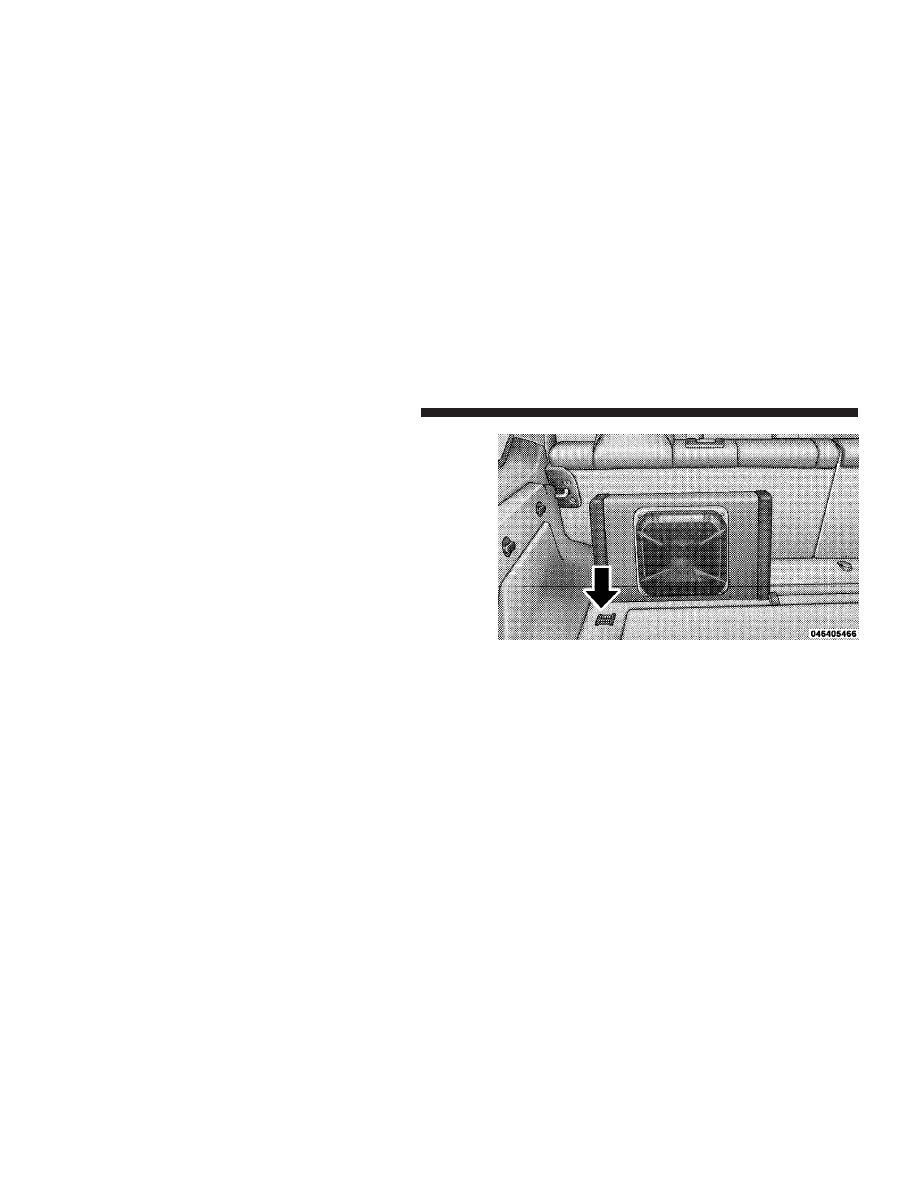Jeep Grand Cherokee SRT8 (2009 year). Instruction - part 17

KICKER
姞
HIGH PERFORMANCE SOUND SYSTEM
WITH DRIVER-SELECTABLE SURROUND (DSS) –
IF EQUIPPED
The removable subwoofer is located in the rear cargo
area, and is fastened in place using the child restraint
anchors, located on the left rear passenger seatback.
Installing The Subwoofer
1. Lower the left rear passenger seat.
2. Align the left outside edge of the subwoofer with the
outside edge of the inner cargo tie down hook.
256
UNDERSTANDING YOUR INSTRUMENT PANEL